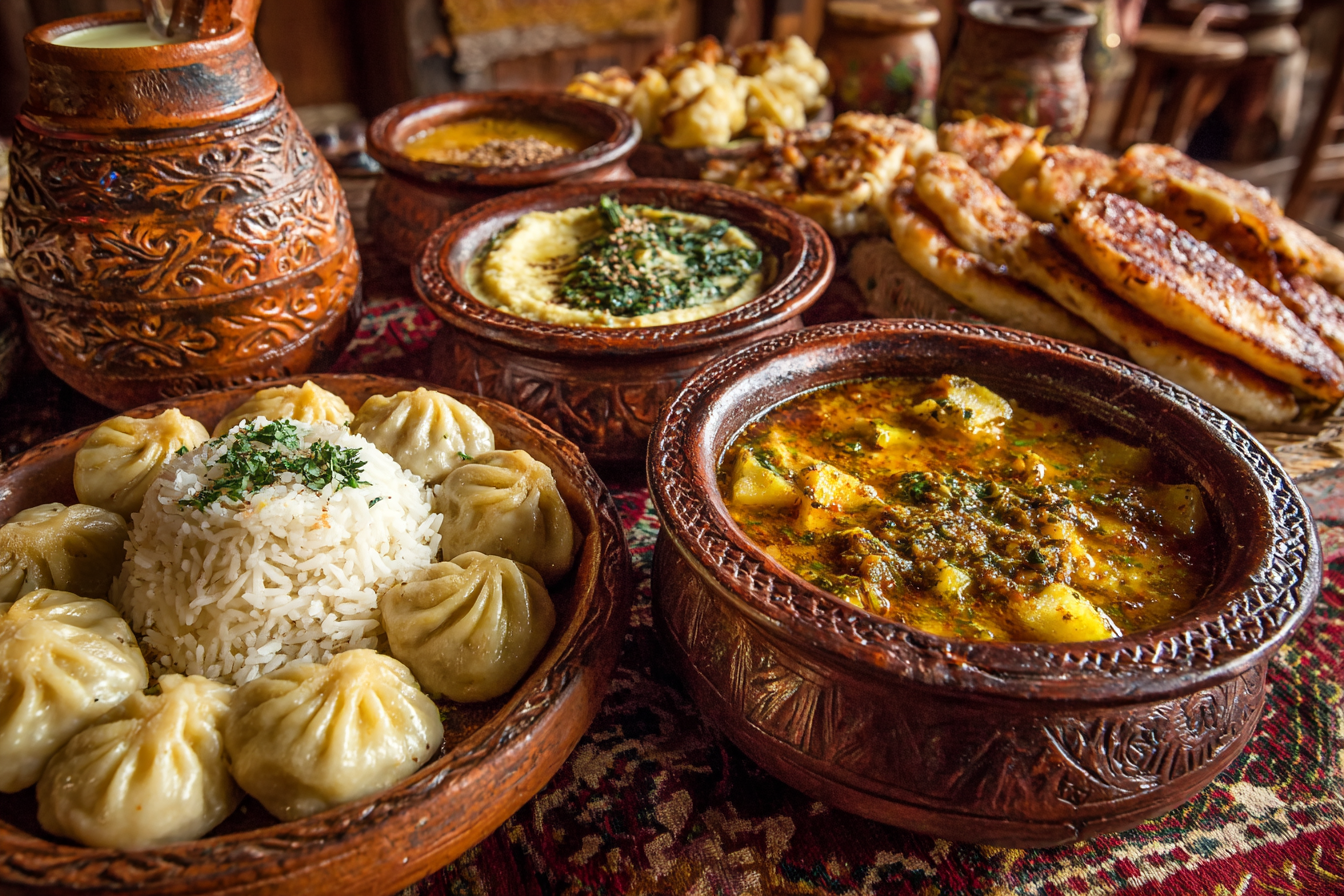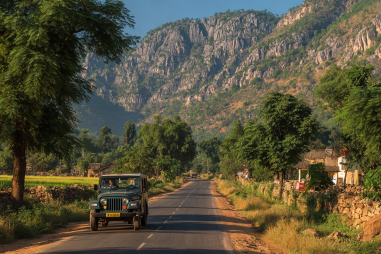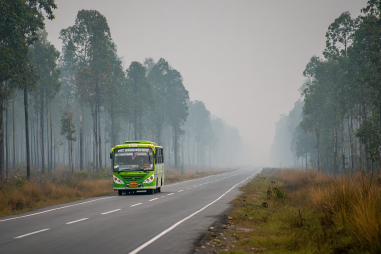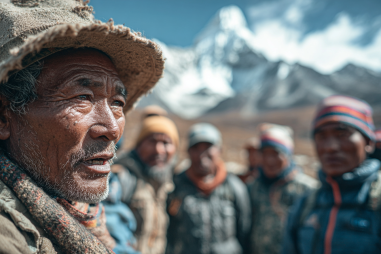Trekking to Annapurna Base Camp is not just a journey through some of the most breathtaking landscapes in the Himalayas—it’s also a remarkable culinary adventure. The local cuisine along the trail offers a wonderful glimpse into the culture and traditions of Nepal, providing hearty and flavorful meals that keep trekkers energized through challenging days. From the iconic dal bhat to tasty momos and warming thukpa, the food at Annapurna Base Camp is an essential part of the experience. This guide will take you through the most popular dishes, local drinks, dietary tips, and where to find authentic meals as you trek in this stunning region.
Overview of Nepali Cuisine in the Annapurna Region
Nepali food is a celebration of simplicity and nourishment, perfectly suited to the mountainous terrain and climate of the Annapurna region. The diet here is influenced by Tibetan, Indian, and indigenous Himalayan culinary traditions. Meals rely heavily on locally available ingredients like rice, lentils, vegetables, buffalo meat, and dairy products. The food is designed to provide sustained energy, essential for the rigorous trekking conditions. Guests are welcomed with genuine warmth, and sharing a meal is often an opportunity to experience local hospitality and culture firsthand.
Staple Meals for Trekkers
For those trekking through the Annapurna region, staple meals are thoughtfully balanced to replenish energy and provide necessary nutrients. Dal bhat is the cornerstone of the trekking diet. This meal consists of steamed rice (bhat) served with lentil soup (dal) accompanied by vegetable curries and pickles. It’s filling, nutritious, and served multiple times a day on some trekking routes.
Another popular staple is noodles and soups, which provide warmth and hydration, especially at higher altitudes. Meals are usually followed by tea or herbal infusions that help with digestion and keep the body warm in cold mountain conditions.
Popular Dishes: Dal Bhat, Momo, Thukpa
Among the many dishes you’ll encounter, three stand out as favorites for trekkers:
- Dal Bhat: Often described as Nepal’s national dish, dal bhat forms the basis of most meals along the trek. The lentils are slow-cooked to perfection, providing protein and fiber, while the rice offers carbohydrates. It is commonly served with side dishes including curried vegetables, pickled radish, and sometimes chicken or buff meat when available.
- Momo: These delightful dumplings are a must-try. Filled with vegetables, cheese, or meat, momos are steamed or fried and usually accompanied by a spicy tomato-based dipping sauce. They make a perfect snack or light meal during a break in trekking.
- Thukpa: A hearty noodle soup of Tibetan origin, thukpa combines broth with noodles, vegetables, and occasionally meat. Its warm and comforting nature makes it popular during cold evenings at high-altitude lodges.
Traditional Drinks and Snacks
The trekking trail offers more than just full meals—traditional drinks and snacks add variety and energy boosts throughout the day. Tibetan butter tea, known locally as “po cha,” is a unique drink made with tea leaves, yak butter, salt, and sometimes milk. Its rich flavor and high-calorie content make it perfect for cold days on the trail.
Other common drinks include sweet milk tea with spices and locally brewed fruit juices. Snacks might include roasted barley flour called tsampa, nuts, dried fruits, and locally made biscuits that provide handy sources of energy between meals.
Nutrition and Energy Considerations
Proper nutrition is vital during the Annapurna Base Camp trek, where daily hikes can challenge even seasoned travelers. Meals rich in carbohydrates, proteins, and fats keep energy levels steady and aid recovery. Dal bhat’s combination of carbs and lentils is especially beneficial for sustaining long hiking days. Additionally, staying hydrated by drinking plenty of water and warm teas is essential to prevent altitude sickness and fatigue.
Many teahouses and lodges focus on providing balanced meals tailored for trekkers, ensuring options that support endurance and maintain strength throughout the route.
Where to Find Authentic Meals on the Trail
Authentic Nepali meals can be found at teahouses (lodges) and local guesthouses dotted along the Annapurna trekking route. Places like Nayapul, Ghorepani, Chomrong, and of course, Annapurna Base Camp itself offer menus featuring traditional dishes prepared with fresh local ingredients.
Some lodges pride themselves on serving handmade momos and fresh dal bhat, prepared by families who have lived in the region for generations. Don’t hesitate to ask the cooks about the food—they often enjoy sharing stories about the recipes and ingredients.
Dietary Tips for Travelers (Vegetarian/Vegan Options)
Nepali cuisine naturally incorporates many vegetarian dishes due to religious and cultural practices, making it relatively easy for vegetarians and vegans to find satisfying options along the trek. Dal bhat, vegetable curries, lentil soups, rice dishes, and momos stuffed with vegetables or cheese often fit the bill.
However, it’s important to communicate any dietary restrictions clearly at each stop. While many places can accommodate vegetarian and sometimes vegan requests, availability varies by location. Carrying some nutritional snacks like energy bars or dried fruits can be helpful for extra assurance.
Food Hygiene and Safety on the Trek
Food safety is critical in high-altitude trekking areas where resources can be limited. Most teahouses maintain a simple but effective hygiene standard to ensure food is safe. It’s advisable to eat freshly cooked meals and drink boiled or bottled water to avoid stomach issues.
Handwashing before meals is common, and many lodges provide boiled water for tea and cooking, which helps reduce the risk of contamination. Carrying hand sanitizer and some basic medications for digestive health is smart preparation.
Cooking Experiences in Local Villages
For travelers eager to engage deeper with the local food culture, some villages along the Annapurna route offer cooking experiences. These immersive opportunities allow trekkers to learn how to prepare traditional Nepali dishes using local ingredients and cooking techniques.
Participating in a cooking session means not only enjoying a delicious home-cooked meal but also connecting with local families, understanding their way of life, and gaining appreciation for the culinary heritage of the region.
Savoring Every Bite on Your Trek
The journey to Annapurna Base Camp is as much about the flavors you discover as the views you admire. Tasting local dishes like dal bhat, momos, and thukpa enriches your trekking experience, offering comfort and energy needed for the adventure. By embracing the local cuisine, respecting cultural foods, and making thoughtful dietary choices, you’ll deepen your connection to this extraordinary part of the world. So, grab a plate, dig in, and enjoy the warmth and hospitality served along with every meal on the trail.







